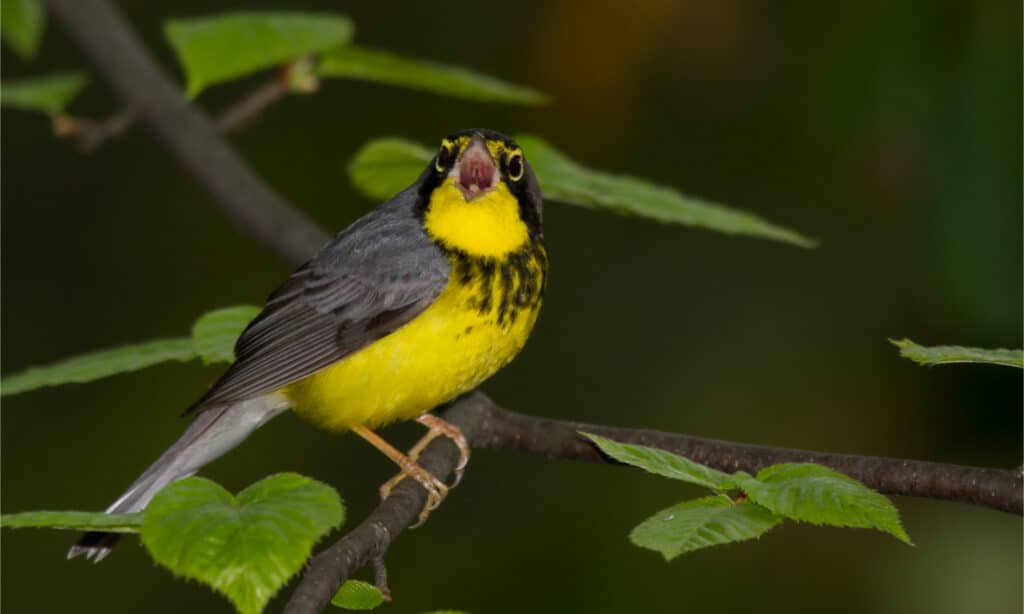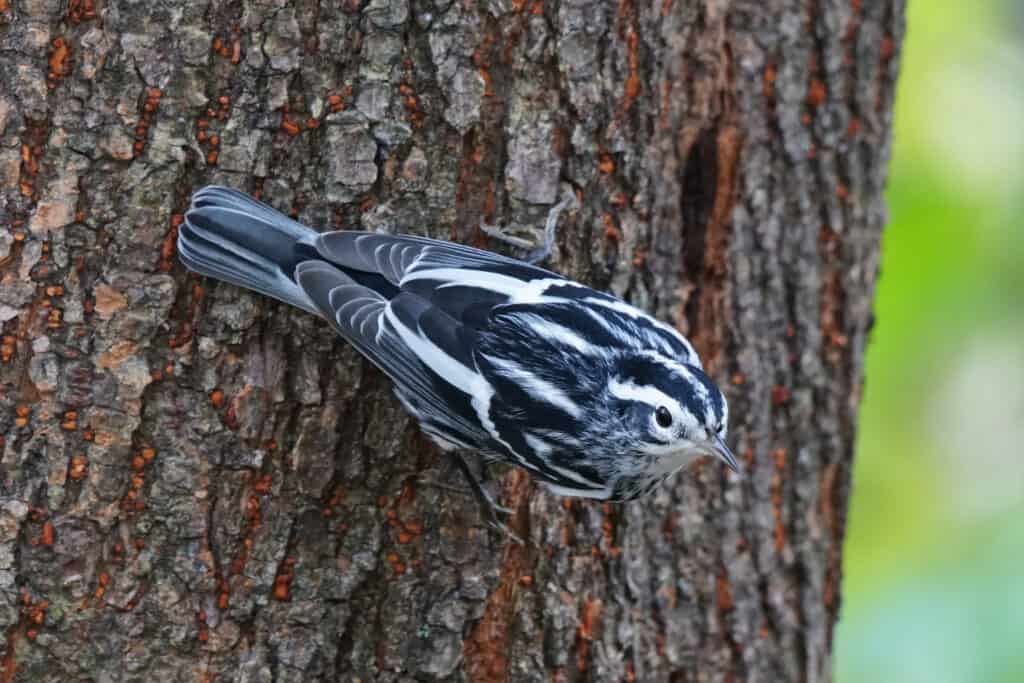From a scientific point of view, it is rather difficult to pinpoint warblers. Some are part of superfamilies, while the consensus is that most perching birds are warblers. However, the crystal clear thing is that, like many other birds, warblers are insectivorous.
But the insect world is quite big and, most importantly, varies in size and strength. Warblers, on the other hand, are mostly small birds. So what do they eat exactly on a daily basis?
If you’ve ever wondered what the plethora of small birds you see on your forest walks eat, this article has all the answers!
What Are Warblers?

Warblers are multiple birds from the
Passeriformesorder.
©Paul Reeves Photography/Shutterstock.com
Warblers are multiple birds from the Passeriformes order. As a result, two species of birds referred to as warbles might not be closely related to each other. Instead, most of them share some distinctive characteristics of warblers, such as small size, vocal nature, and an insectivorous diet.
Several superfamilies of birds consist mostly of warblers – Passeroid, Sylvoid, Australasian, and Tit-warblers. There’s also the Hawaiian honeycreeper, which is often considered part of the warbler type because it’s affected by adaptive radiation.
In terms of diet, we do not need to concern ourselves with the many species of small birds referred to as warblers. It’s enough to know that they prefer insects mainly.
Why Are They Called Warblers?
Warblers get their name from the Old French word werbler. It means singing with trills and quavers. The name was first given to the Old World family of warblers around 1773. Old World warblers are different from Passeroid warblers. The latter were named warblers mainly because they resemble the Old World warblers in terms of shape and size.
What Are Warblers Known For?
Warblers are known as one of the smallest species of birds to fly above North America and for their rather long migratory routes. Some warbler species can travel all the way from South America and Canada – a full, round trip.
What Do Warblers Eat?

Warblers eat mainly insects.
©Frode Jacobsen/Shutterstock.com
Warblers are insectivorous birds known to avoid designated bird feeders. This is because most species of warblers spy on their food from the treetops. Warblers eat mainly insects – this applies to the great majority of species. However, species such as the Pine Warbler are known to eat quite large quantities of seeds besides the usual insects.
Still, the main diet of most warblers consists of insects, among which grasshoppers and wasps. However, according to research and observation, many warbler species also add vegetable matter to their diet – primarily berry juice and nectar.
If you want to attract warbler species to your garden and don’t want to hunt some insects, you can do a couple of things. First, limit insecticide use so that the insect population will flourish. Then, add a bird bath – warblers love them. Ultimately, you can try to attract them with nectar, mealworms, suet, and sunflower chips.
A List of Foods Warblers Eat
It can be quite difficult to compile a complete list of foods warblers eat, especially due to the large number of species, as well as their variety. Here are some of their favorite foods:
What Do Baby Warblers Eat?
Like most bird species, warbler mothers feed their babies in the first months of life. They capture insects and return to the nest to feed the youngsters. The important bit is that the mother bird eats the insect entirely and regurgitates it to the chick upon returning to the nest. This also makes it easier for the chick to eat, as the regurgitated matter is much softer.
How Do Warblers Catch Insects?

Most warbler species hunt from trees, but several species also prefer hunting on the ground.
©Mariusz Lopusiewicz/Shutterstock.com
Warblers hunt in different manners, depending on the species. Most species hunt from trees, but several species also prefer hunting on the ground. Some glean insects from treetops, especially from within the foliage, while other species fly-catch their favorite prey.
Facts About Warbler Groups
The most interesting thing about warblers is that their collective noun changes depending on species. While usually a group of warblers is referred to as a fall, confusion, wrench, or bouquet, there are a couple of other incredibly interesting ways to call certain species’ groups:
- A group of Connecticut warblers is called a “Yankee.”
- A group of red-faced warblers is called an embarrassment;
- A group of Yellow warblers is called a sweetness;
- A group of ovenbirds is called a stew;
- A group of Magnolia warblers is called a corsage;
- A group of Kentucky warblers is called a “Derby.”
- A group of Black-throated green warblers is called a contusion.
Other Interesting Facts About Warblers
- They are America’s most common songbirds, with more than 50 species living in the country.
- Warblers are found in every state in the United States
- Warblers are known for not eating birdseed, so trying to attract them with it won’t work
- Warblers are typically brightly-colored birds, but some species can be gray or brown
- Warblers are small birds that rarely grow longer than 7 inches.
Up Next:
- Canada Warbler Bird Facts
- Black and White Warbler Bird Facts
- Sedge Warbler – Acrocephalus schoenobaenus
- Magnolia Warbler Bird Facts
The photo featured at the top of this post is © Agami Photo Agency/Shutterstock.com
Sources
- Birdorable / Accessed October 6, 2022
- Coles Wild Bird / Accessed October 6, 2022
- The Spruce / Accessed October 6, 2022
- Wild Birds Unlimited / Accessed October 6, 2022
Thank you for reading! Have some feedback for us? Contact the AZ Animals editorial team.







